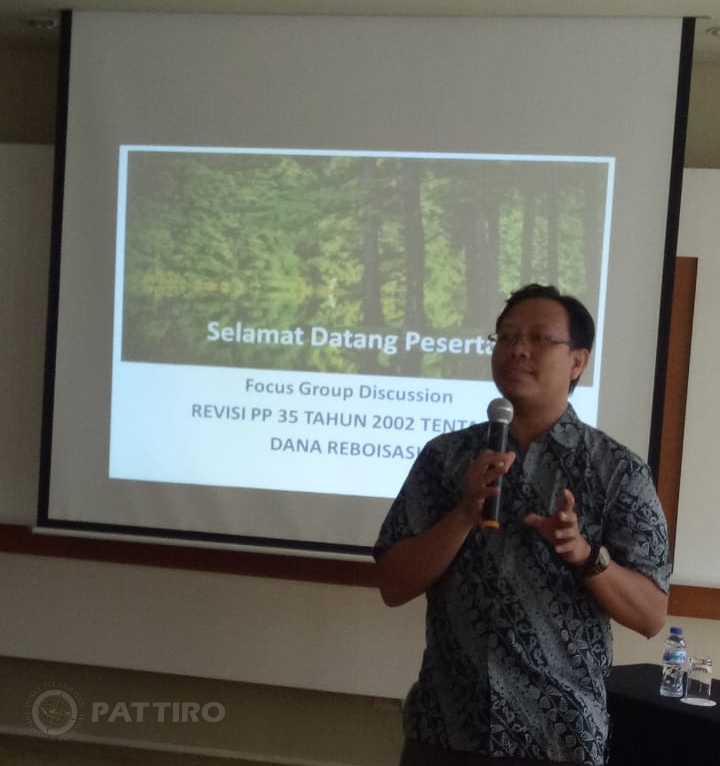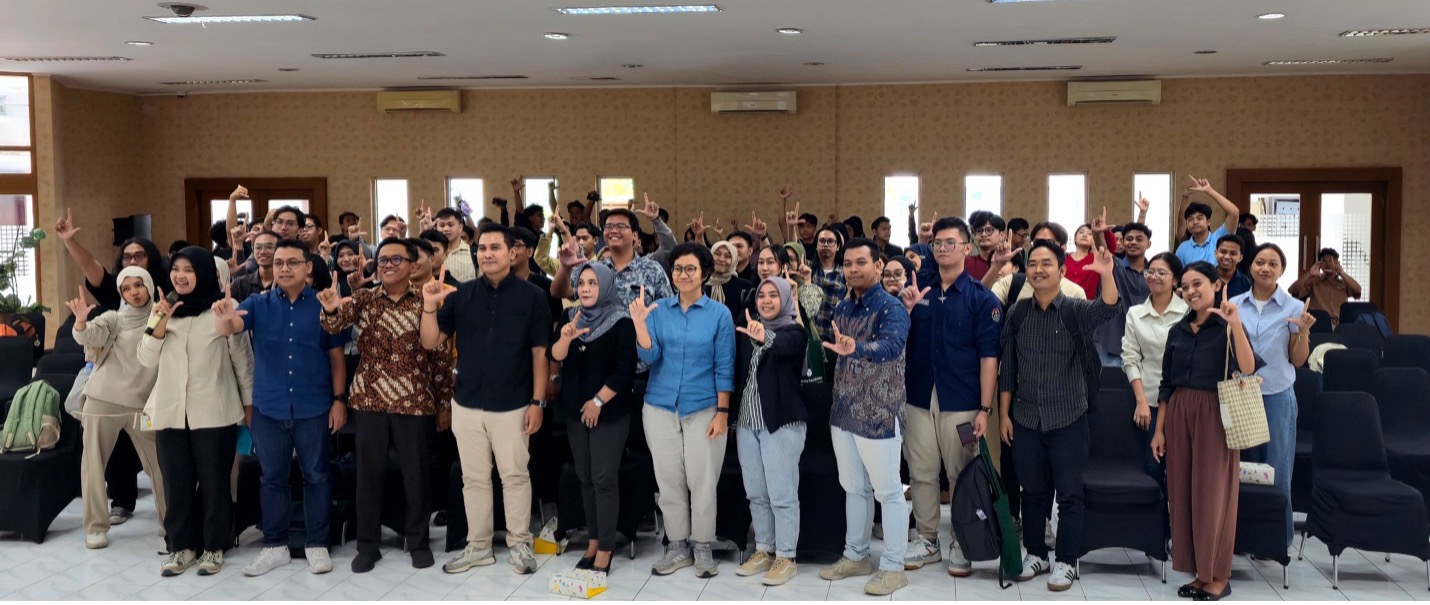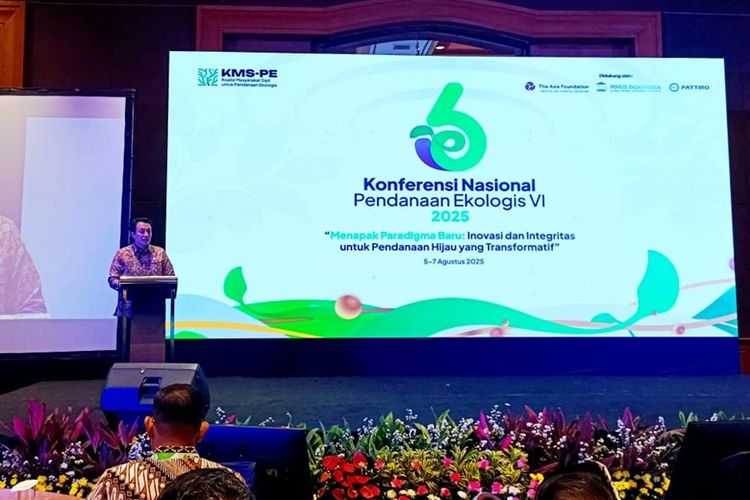 Contributor: Bejo Untung
Contributor: Bejo Untung
Reforestation Funds (DR) as a fiscal resource must be utilized optimally to finance sustainable forest development for the welfare of the community. The funds, which are mandated to be used for land and forest rehabilitation, are considered to be unable to overcome the problem of critical land. On the other hand, the DR, which is a profit sharing fund for producing regions, has not been able to be absorbed properly, it has been proven that there are still many regions that have a lot of remaining funds in their regional treasury accounts. These are, among other things, the conclusions produced in the focused discussion regarding the importance of revising Government Regulation (PP) no. 35/2002 concerning Reforestation Funds in Jakarta, 4 October 2018 organized by PATTIRO in collaboration with the President’s Special Staff Team (SKP) for Economic Affairs and the CSO Coalition for Optimizing DR, supported by The Asia Foundation. This event was attended by representatives from the Directorate General of Financial Balance and the Directorate General of Budget, Ministry of Finance, the Finance Bureau and Legal Bureau of the Ministry of Environment and Forestry, BLU of the Forest Development Financing Center of the Ministry of Environment and Forestry as well as members of the CSO Coalition.
Member of the President’s Special Staff for Economic Affairs, Erani Yustika, stated that as a fiscal resource DR could be used to support the government’s economic policy direction, one of which is agrarian reform and social forestry. According to him, currently many people have permits to access forest use. However, due to budget limitations at the technical ministry, namely the Ministry of Environment and Forestry (KLHK), the communities receiving permits have not yet optimally cultivated their land as a reliable source of life. Therefore, his party encourages every fiscal resource, including DR, to be converted quickly so that the priority program can be implemented well.
Regarding social forestry, PATTIRO and the CSO Coalition note that the problems faced are not only post-permit utilization, but also the target for achieving the permit itself. On this occasion, the Coalition presented data, from 2015 to 2018 the area of forest for which permits have been issued for social forestry was only around 1.3 million hectares. The achievement is still 10 percent of the target of 12.7 million hectares set by the government in 2019. With a target of that size, the government had to work hard to achieve 90 percent over the past year.
Meanwhile, on the other hand, the budget owned by the Directorate General of Social Forestry and Environmental Partnerships (PSKL) of the Ministry of Environment and Forestry, as the work unit which has the duties and functions of carrying out social forestry, tends to decrease. In 2016 the budget allocation fell by 14 percent from the previous year, and in 2017 it fell to 20 percent. Even though it experienced an increase of 114 percent in 2018, in 2019 it fell again by 42 percent. Based on these conditions, the Coalition suggests expanding the use of DR, apart from rehabilitating forests and land, it can also be used to finance social forestry. “Therefore, in the process of revising PP no. 35/2002 needs to formulate articles that regulate the expansion of this use,” emphasized PATTIRO Director Maya Rostanty.
The CSO Coalition further added, although the DR is quite large, the target for achieving forest and land rehabilitation performance is still not satisfactory. The realization of the implementation of forest and land rehabilitation that can be recorded from 2012 to 2018 on average only reduces critical land area of 500 thousand hectares per year. This shows that DR is still not managed well with low absorption levels. Data from the PNBP Directorate, Directorate General of Budget, Ministry of Finance, as of 2018, the central government’s share of DR remaining in the Forest Development Account (RPH) is IDR 7.5 trillion. Meanwhile, the DR deposited in regional cash accounts according to data from the Directorate General of Financial Balance of the Ministry of Finance is IDR 4.8 trillion, consisting of the remaining district/city revenue sharing funds before 2016 amounting to IDR 4.5 trillion and the provincial share after 2016 amounting to IDR 292 billion.
According to KLHK Finance Bureau staff Sri Ulina, the funds in the Forest Development Account are difficult for the KLHK to access due to the complexity of the mechanism as regulated by the Joint Regulation of the Ministry of Finance and the Ministry of Environment and Forestry regarding RPH. There should be a simplification process so that the Ministry of Environment and Forestry can utilize these funds in accordance with its mandate. Meanwhile, on the other hand, Istiyanti from the PNBP Directorate of the Ministry of Finance stated that the current state financial system no longer allows for a scheme to return remaining ministry spending to the Forest Development Account. For your information, the Forest Development Account is an account provided to accommodate the remaining KLHK expenditure from DR. According to Istiyanti, in the future, the remaining funds must be returned to the state treasury. Thus, the remaining funds cannot be withdrawn by the Ministry of Environment and Forestry but are included in the state financial scheme which will be outlined in the APBN.
Regarding the problem of DR absorption by regions, the Ministry of Finance has issued Minister of Finance Regulation (PMK) No. 230/2017 as a derivative of Law no. 15/2017 concerning the 2018 APBN. This PMK regulates expanding the use of DR revenue sharing funds, with the hope that regions will absorb more. Through the PMK published in December 2017, regions are expected to be able to allocate funds for DR revenue sharing in the 2018 APBD.
However, in its implementation, this PMK has not been effective enough. Based on monitoring data from the Directorate General of Fiscal Balance, of the Rp. 100 billion in DR revenue sharing funds budgeted by the regional government, only Rp. 1 billion has been realized. “Most local governments still do not dare to refer to this PMK. They still refer to PP no. 35/2002 because according to them the PP is the only legal reference that can be used,” said Dimas Pradhana from the Directorate General of Financial Balance. Therefore, according to Dimas, the revision of the PP needs to be accelerated so that there is a definite legal reference for regions in utilizing DR revenue sharing funds.
Intermediate Designer at the Legal Bureau of the Ministry of Environment and Forestry, Bambang Eko, stated that currently the revision process is still ongoing. In this case, the Legal Bureau accommodates proposals from various work units within the Ministry of Environment and Forestry and formulates them in article by article to then be discussed in the inter-ministerial team, namely the Directorate General of Budget, Ministry of Finance, Ministry of Law and Human Rights, and the State Secretariat. The process is 80 percent complete and the target is to be set in November. However, Bambang still opens up opportunities for CSOs to provide input related to the material. “We are willing to accept friends from CSO for discussions at any time,” said Bambang.
Representing the President’s Special Staff Team for Economic Affairs, Yuna Farhan said that the process of revising this PP must be accelerated by taking into account the interests of optimal absorption to support the government’s priority programs. According to him, the President is paying very serious attention to the use of fiscal resources. Therefore, the President’s Special Staff Team will continue to monitor the process and ensure that the substance of the material is in line with the spirit of sustainable forest development and provides benefits for the welfare of the community.





